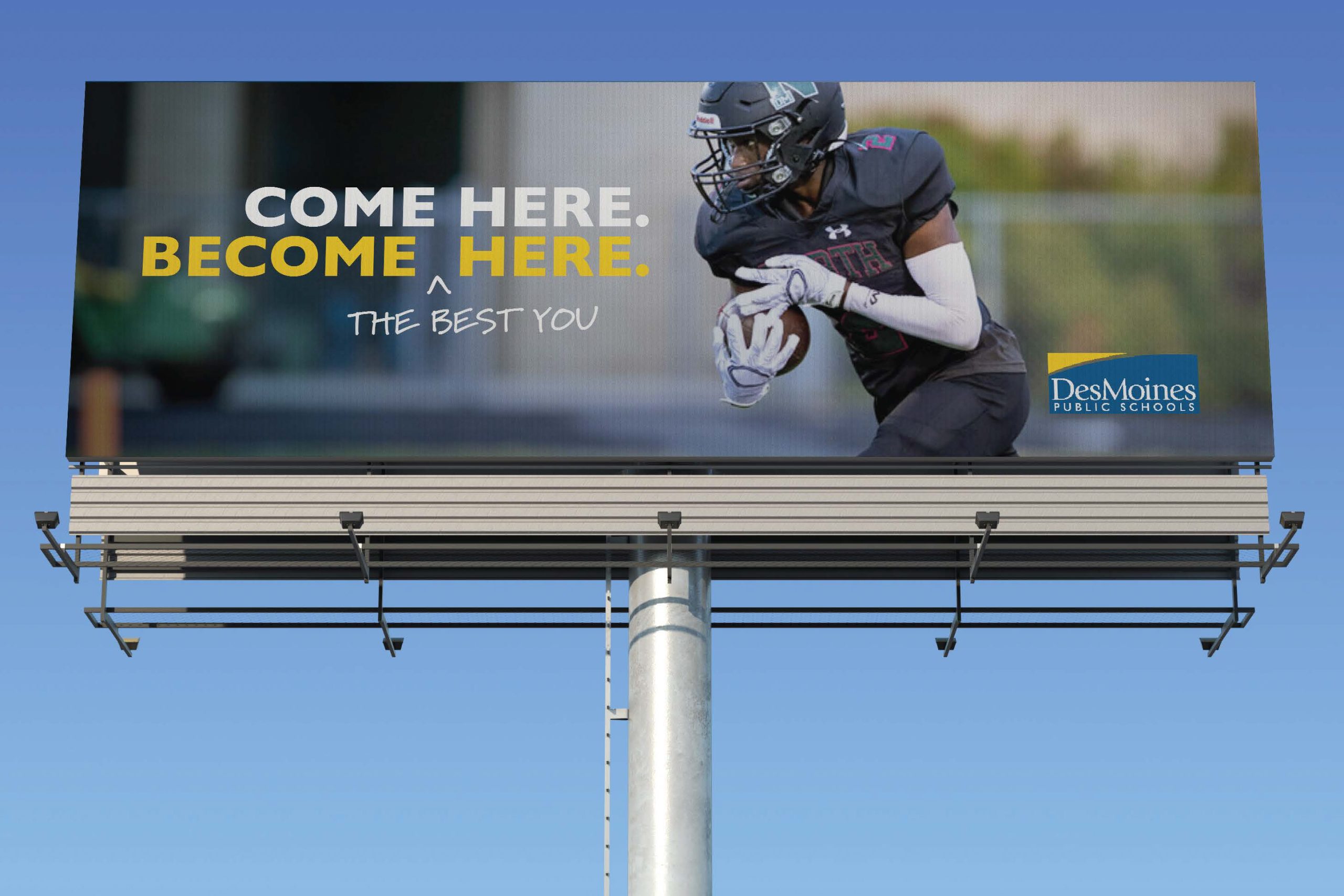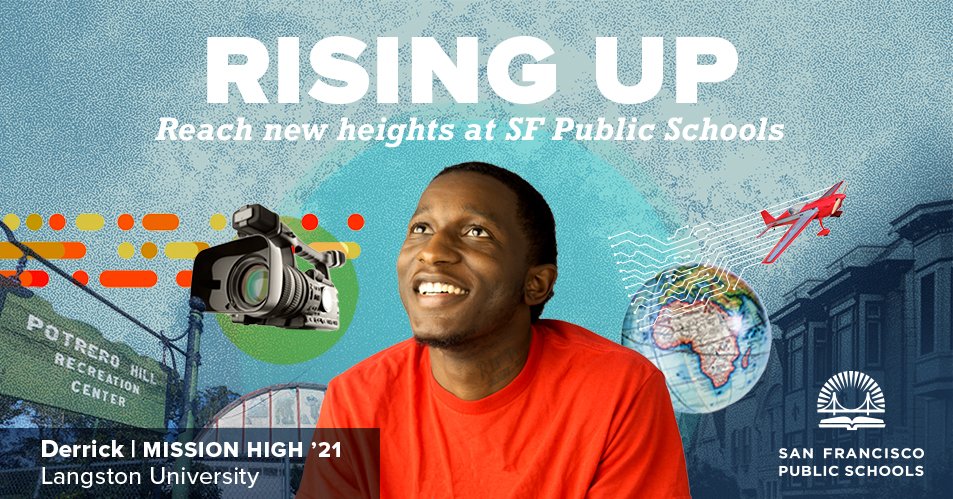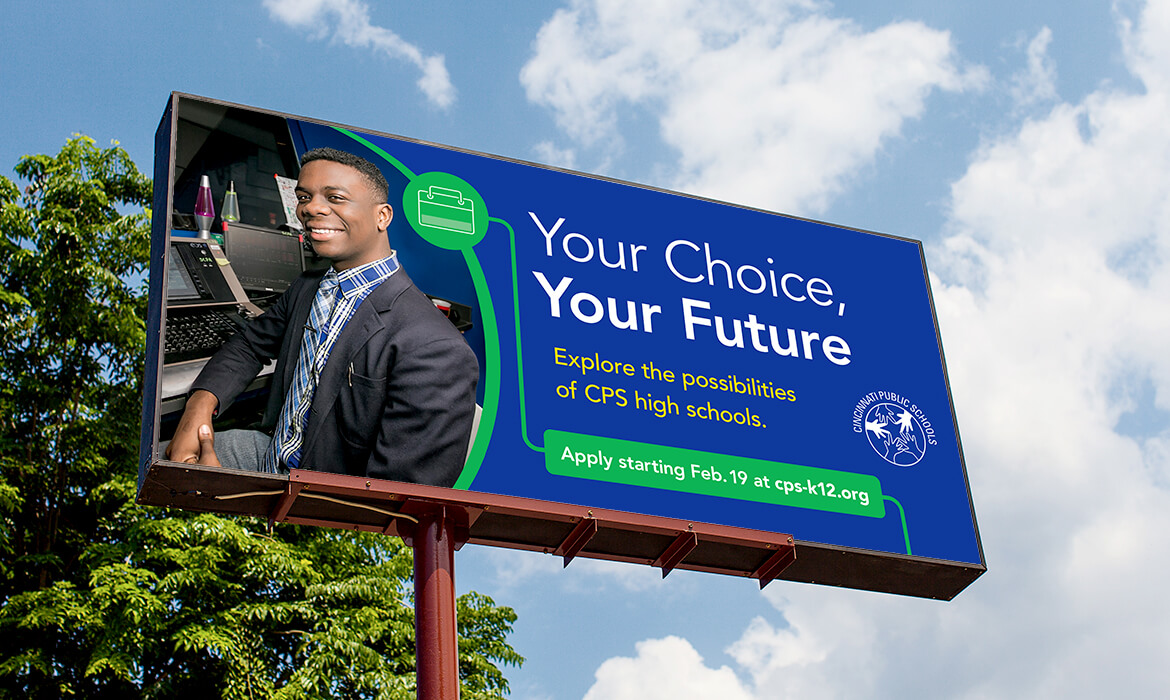
School choice. If you’re a parent of school-aged kids, you know exactly what this means for you: you can opt to leave the public school in your neighborhood and enroll your children in alternative education options. There are online options, schools focused on STEM or the arts, team-based learning, and foreign language immersion programs. You may find all of the above in your public school system because primary and secondary education has evolved more in the past 5 years than in the last 25 years.
Parents want to find the best learning option for their students, and school administrators must make a compelling case for their offerings. Like any other decision, it’s complicated.
But for school administrators and teachers, school choice suddenly means they find themselves navigating unfamiliar territory—the world of marketing. It’s a competitive landscape, with parents rethinking their choice before kindergarten, before high school, and often many times in between.
Educators must now inform the public about their schools' benefits and features through marketing, advertising, and public relations—which isn’t always easy. For one, educators don’t want to be in advertising. They want to spend time improving the school and, ultimately, teaching.
Many educators don’t have formal marketing training, they don’t have access to creative resources, and they just might not even know where to start. With all this in mind, how do schools communicate with parents and students to showcase their unique programs?
The New Education Landscape
Parents now select school options for their kids for various reasons, including location, safety, availability of programs, size, test scores, foreign language immersion, innovation, and more. Whether it’s a charter school, homeschool, or even a public school in another district, the competition between schools is greater than ever. According to the National Alliance for Public Charter Schools, there are 3.7 million students in 8,000 charter schools and campuses across the United States. Arizona is the state with the largest share of students who attend charter schools, which is around 200,000.
As With Any Business, It Starts With The Essentials
With more options available for families, schools will inevitably need to market and communicate effectively—and when they do, they’ll need to start with the essentials.
Perception
Schools need to know their current perception by students, parents, and community members. By conducting research through surveys and feedback sessions, schools can determine the public’s awareness, impressions, and opinions. Knowing how a school or district is perceived helps build an accurate brand pyramid that includes the brand promise, tone and voice, and features and attributes such as programs and class sizes. It can also help determine the next steps to improve their perception and overall image.
Place
Schools should analyze the placement of current messaging efforts and determine if those placements make sense based on where their target audience spends their time. Depending on the demographics and psychographics of the school’s parent pool, schools can consider placing messages online, on social media channels, out in the community in places such as grocery stores or gyms, mailboxes through direct mail, or elsewhere.
Promotion
Importantly, schools will need to develop messaging and creative while considering the following:
- What do the messages say?
- What does the creative look like?
- Where will the audience see them?
- How will creative advertising, public relations, and social media work together to tell the same story?
These promotions communicate the school’s advantages and persuade parents that their school is the best choice for their students' learning styles, needs, and objectives.
People
Relationships are the foundation of brand loyalty. Schools must create and maintain positive relationships with their communities to ensure all needs are being met. Schools can meet that community by regularly communicating with parents, students, and other community stakeholders, interacting regularly on social media, and sharing the district’s achievements with news outlets. Word-of-mouth marketing is persuasive, and happy stakeholders will likely carry messages forward.
Of course, budget will be a consideration for all of these elements. Schools need to balance earmarking enough dollars to create an impact with their marketing without sacrificing the needs of the students. Working with a marketing agency can ensure that any money is spent thoughtfully and effectively.
Going Above and Beyond
After the brand work, the next step is the application: how, where, and when to communicate the message. Here are a few examples of public schools advertising using a brand-first approach.
Des Moines Public Schools
Projecting a 1,500-student decrease over the next three years, DMPS launched its “Come Here. Become Here.” campaign, seeking to maintain its enrollment of 30,000-33,000 students, according to its 2023-24 DMPS Enrollment Report. The campaign features visuals of students participating in activities, extracurriculars, and programs available within the school district, including sports, music, radio, fashion design, art, and even their pilot program.
“To prospective students and teachers, we invite you to come here. You will form bonds here, grow here, learn new skills here, and achieve here. But most of all, you will become here.”

Why It Works:
Some charter schools or homeschooling options offer limited opportunities for students outside of reading, writing, and arithmetic. By focusing on its extracurriculars, DMPS positions its schools as having a lot more to offer students. This campaign speaks to the fullness of a public school experience; students won’t just learn; they'll become the best versions of themselves.
San Francisco Public Schools
According to Ed Data, San Francisco Public Schools has had a decrease in enrollment of just over 5,000 students from the 2019-2020 school year to the 2022-2023 school year. In an effort to increase enrollment, they launched their “Student Success Stories” campaign, highlighting real students “from all backgrounds of life” and showcasing their next move through visuals: one student, attending Stanford University, majoring in robotics. Another student, accepted into Langston University, is interested in videography and travel.

“San Francisco Public Schools prepare students to go far in life. Each and every one of our schools is filled with curious, self-confident students who reflect the rich diversity of our City. From new immigrant homes where English is a second language to 5th generation San Francisco families, our students are proof of what happens when you combine engaged teachers, high-quality academics, and opportunities for growth and discovery. We invite you to see how the students profiled here are going onto the next phase of their lives fully prepared and fully engaged.”

Why It Works:
Testimonials are a tried and true marketing strategy. This creative proves that the district has been successful in providing students with opportunities that set them up for success after graduation. The campaign can extend to include many different kinds of success stories (in many different languages), appealing to a wide audience, including parents and students. It can easily be applied to different media placements for consistent messaging across a campaign.
Cincinnati Public Schools
In a campaign focused on high school recruitment, Cincinnati Public Schools launched “Your Choice, Your Future” in 2019, when district-wide enrollment was at 34,000 students. Their five-year forecast released in 2023 shows enrollment is projected to increase to over 35,500 students by 2027.

Why It Works:
This campaign subtly takes on the competition by mentioning choice. It's a good reminder that when parents are choosing a school, CPS should be considered as an option—just like any alternative. The campaign invites prospective parents and students to explore the options available to them at CPS.
Schools that need advertising efforts don’t need to do it alone. An agency partner can help them launch a campaign that will help them hit their enrollment and recruitment goals. Learn more about the benefits of partnering with an agency here.




